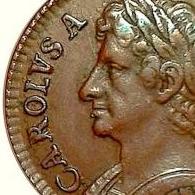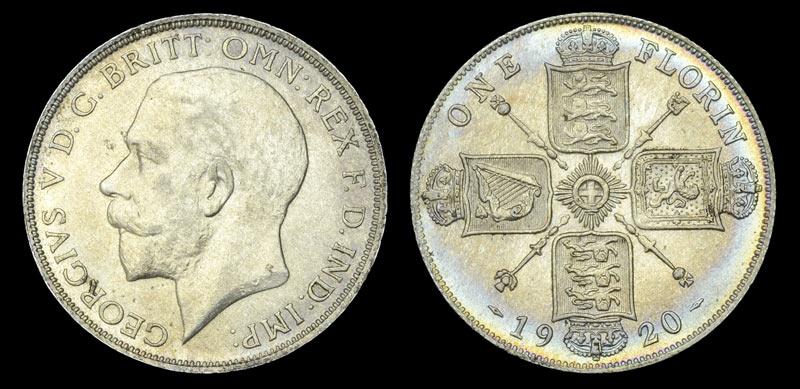Leaderboard
Popular Content
Showing content with the highest reputation on 02/19/2022 in all areas
-
Investment - so, who decides the value of the investment over time ? It can only be an opinion until the item is actually sold which might then make a loss.3 points
-
Fractional ownership = BS. I just can not imagine doing this other than for investment purposes.3 points
-
Solely speculation i think, and is similar to the "gimmick" of NFT which I totally have no idea about it, and also no one care about ownership of the coin. For the value, i think it will be determined by the seller, who will only sell a little part at first, pushing up the price, and sell the rest. Traditionally trap, haha, am i thinking too much? It's also mentioned 100 replicas will be made with Baldwin, any chance these will be sold in the market as a real one in the future? By the way, I would rather have a very common 1963 Penny on hand, at least I own an art piece😁, though someone may think otherwise😅.2 points
-
2 points
-
As we know as collectors, flicking through Groom, Davies and Rayner can be tiresome - so here is a quick list to check that you have all the varieties If you have any more varieties I would be interested in a reply so I can add them to the list. Hopefully this is something that will benefit new collectors - I know it is something I really needed! 1816 1817 Large Head 1817 Large Head, D/T in DEI 1817 Large Head, I/Arabic 1 in FID 1817 Large Head, E/F in DEF 1817 Large Head, F/E in REX 1817 Large Head, U/U in QUI 1817 Large Head, S/I in PENSE 1817 Large Head, E/F in DEI (don't feel like you have to collect all the 1817's ) 1817 Small Head 1817 Small Head, bottom loop of 8 open 1818 1819 1819, 9/8 1819, 9/9 1820 George III 1820 George IV 1821, 11 leaves on thistle 1821, 6 leaves on thistle 1821, R/B in BRITANNIAR (not sure which R - does it even matter as the vast majority of us will never see one!) 1823 Shield 1823, N/E in PENSE 1823 Garter (rare) 1824 Laureate Head 1824 Bare Head 1825 1826, I of BRIT has serifs 1826, I of BRIT missing top left serif 1828 1829 1834, block WW (harder) 1834, italic WW 1835 1836 1836, 6/5 1836, L/E in LMVS 1837 1839 (varieties exist but is a rare coin so just put the one) 1840 1841 1842 1843 1844, 4's without serifs 1844, 4's with serifs 1845, 4 without serif 1845, 4 with serif 1845, 5/3 (ext rare) 1846, 4 without serif 1846, 4 with serif (does it exist?) 1846, 8/6 1848 1848, second 8/6 (does this come with 4 with a serif and without a serif, if not this could tell us a lot about which varieties were minted first and which were minted last???) 1848, 8/7 (rare) 1849, large date 1849, small date 1850 1874, 4 without serif 1874, 4 with serif (does it exist?) 1875 1876 1876, 6/5 1877 1878 1879, I of DEI to gap 1879, I of DEI to bead 1880, I of FID to gap 1880, I of FID to bead 1881, I of DEI to gap 1881, I of DEI to bead 1882 1883 1884 1885 1886 1887 Young 1887 Jubilee, 2 thick lines below crown and nearly 4 pearls in centre arch 1887 Jubilee, one thick line with a thin line below and above which is situated below the crown and 3 pearls in centre arch of crown 1888 1889, OBV: 2 thick lines below crown and nearly 4 pearls in centre arch, REV: cross has curved edges and large pearl 1889, OBV: 2 thick lines below crown and nearly 4 pearls in centre arch, REV: cross has straight edges and small pearl 1889, OBV: one thick line with a thin line below and above which is situated below the crown and 3 pearls in centre arch of crown, REV: cross has curved edges and large pearl 1889, OBV: one thick line with a thin line below and above which is situated below the crown and 3 pearls in centre arch of crown, REV: cross has straight edges and small pearl 1889, OBV: one thick line with a thin line below and above which is situated below the crown and 3 pearls in centre arch of crown, REV: large cross (DAVIES IS RUBBISH AT THIS SO LOOK AT ALLCOINVALUES SITE AND GOUBY'S TO HELP YOU, IT MAKES SO MUCH MORE SENSE WHEN YOU DO) 1890 1891 1892 1893, I of BRITT to tooth 1893, I of BRITT to gap 1894, I of BRITT to tooth 1894, I of BRITT to gap 1895 1896, thin rim 1896, thick rim 1897 1898 1899 1900 1901 1902 1903 1904 1905 1906 1907 1908 1909 1910 1911 1912 1913 1914 1915 1916 1917 1918 1919 1920, E of DEI has no serif 1920, E of DEI has serif (there are other varieties but I cannot be bothered, if you can and the descriptions are better than in Davies then please do!) 1921, 1 to bead 1921, 1 to space 1922, short H of HONI 1922, tall H of HONI 1923 1924 1925 1926, I of IVS left of tooth 1926, I of IVS to tooth 1927 1928, thin rim on REV, 9 to space 1928, thin rim on REV, 9 to bead 1928, thick rim on REV 1929, D of IND to gap 1929, D of IND to tooth 1930 1931 1932 1933, normal rim 1933, thin rim 1934 1935 1936 1937 1937, with a die crack below the 7, not something British numismatists are interested in, I know, but something to add in and look out for perhaps 1938 1939 1940 1941 1942 1943 1944 1945 1946 1947 1948 1949 1950 1951 1952 1953, A of GRA to gap 1953, A of GRA to bead 1954 1955 1956 1957 1958 1959 1960 1961, full initials (the following are due to die fills so there are many 'varieties') 1961, unbarred E or F 1961, EF missing 1961, EF and C missing 1961, EF and CT missing 1961, polished die 1962, I of TIA to gap, D of DEF to tooth 1962, I of TIA to gap, D of DEF to gap 1962, I of TIA to tooth, D of DEF to tooth 1962, I of TIA to tooth, D of DEF to gap 1963 1964 1965 1966 19671 point
-
I'd say the F79 is definitely rarer than the R13 ascribed to it. They are very rare in high grade. One of those varieties that's not quite in the extremely rare class, but is definitely scarce enough to be hardly ever seen on e bay. Quietly underrated type.1 point
-
I've just done a check of 1875 pennies on Ebay: Obviously, many are that flat that it's not possible tell some apart... Large date 120 Small date 74 1875H 14 F79 ( sea over circle) 0 Pretty much as usual The Heaton version is touted as very rare, and isn't.( except in very good grades) and the F79 is hardly ever there- I see maybe 3 a year tops. Maybe some of the F79 are that flat you can't tell, but where are the other better grades, since it's only rarity 13 or R5, supposedly?1 point
-
I'd say it was damage to the die in the absence of a different font 3. Is it any different to a filled numeral such as the internal angle of a 2 where it is clearly due to the loss of a tiny fragment1 point
-
1 point
-
Russians? We were in Liverpool last night for the Russian State Ballet's production of Prokofiev's Romeo and Juliet. Fabulous, with Expressionism and Dada influences in evidence throughout, so I came away a very happy bunny (man) indeed.1 point
-
1 point
-
Yes. If Boris does go, I hope she's not his replacement. I may have mentioned before that she's got about as much personality and charisma as a wet weekend in Wigan - probably considerably less.1 point
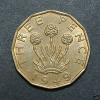
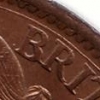
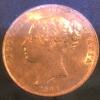
.thumb.jpg.e261d99cf3a302cec57d98663eaae8d6.jpg)






.thumb.jpeg.5a0d637e4d370fa8958e9ea64ac28e68.jpeg)

